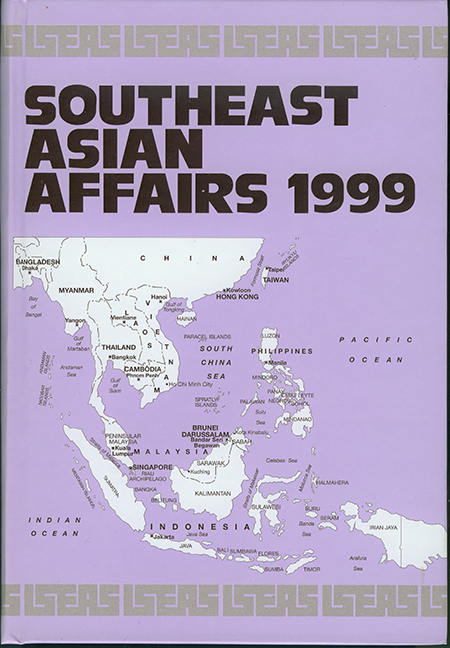Book contents
- Frontmatter
- FOREWORD
- Contents
- INTRODUCTION
- THE REGION
- Southeast Asia: Challenges to Unity and Regime Legitimacy
- The ASEAN Economic Miracle Unravels
- Greater Mekong Sub-Region and the “Asian Crisis”: Caught Between Scylla and Charybdis
- Australia's Election Year: Hansonism and the Asian Financial Crisis
- BRUNEI
- CAMBODIA
- INDONESIA
- LAOS
- MALAYSIA
- MYANMAR
- PHILIPPINES
- SINGAPORE
- THAILAND
- VIETNAM
The ASEAN Economic Miracle Unravels
from THE REGION
Published online by Cambridge University Press: 21 October 2015
- Frontmatter
- FOREWORD
- Contents
- INTRODUCTION
- THE REGION
- Southeast Asia: Challenges to Unity and Regime Legitimacy
- The ASEAN Economic Miracle Unravels
- Greater Mekong Sub-Region and the “Asian Crisis”: Caught Between Scylla and Charybdis
- Australia's Election Year: Hansonism and the Asian Financial Crisis
- BRUNEI
- CAMBODIA
- INDONESIA
- LAOS
- MALAYSIA
- MYANMAR
- PHILIPPINES
- SINGAPORE
- THAILAND
- VIETNAM
Summary
In 1998, the Asian economic miracle seemed like a distant dream for the economies of Southeast Asia, with the string of bad news being blamed on excesses committed during the years of strong growth. The countries reeled from the continued withdrawal of capital from the region, the disintegration and collapse of confidence in domestic financial sectors, policy- and psychology-induced demand contractions, the interdependent weaknesses in the international value of their currencies, and political conflict and a significant erosion of the social consensus over economic policy.
The Southeast Asian economies faced these problems in common, but the impact varied according to the level of development, specific features in their financial systems, the nature of the governments' responses to the crisis, and the impact of the crisis on political stability.
The withdrawal of capital from the region in 1998 constituted the biggest shared factor among the Southeast Asian economies. The level of capital outflow, initiated by the Thai economic crisis of July 1997, increased in 1998 for the four most severely affected ASEAN economies — Indonesia, Malaysia, the Philippines, and Thailand — plus South Korea, with net capital outflows accelerating from US$1 billion in 1997 to $28 billion in 1998. In 1996, there had actually been net inflows of $103 billion.
The fickle nature of short-term portfolio investments was much in evidence during 1998. There was a brief slowdown of capital outflow from the region in the first quarter of 1998, but the levels accelerated as evidence of a deep recession in Japan became inescapable and the yen weakened, Russia's teetering economy saw the offering of interest rates on short-term Russian bonds reach 80 to 100 per cent, and Indonesia's thirty-year political arrangements disintegrated with President Soeharto's resignation in May.
In August, the Russian economic programme collapsed and a general retreat from portfolio investments in all emerging markets ensued. The premium on developing country debt shot up to unprecedented levels of 10 to 15 percentage points by October 1998.
- Type
- Chapter
- Information
- Southeast Asian Affairs 1999 , pp. 20 - 31Publisher: ISEAS–Yusof Ishak InstitutePrint publication year: 1999

